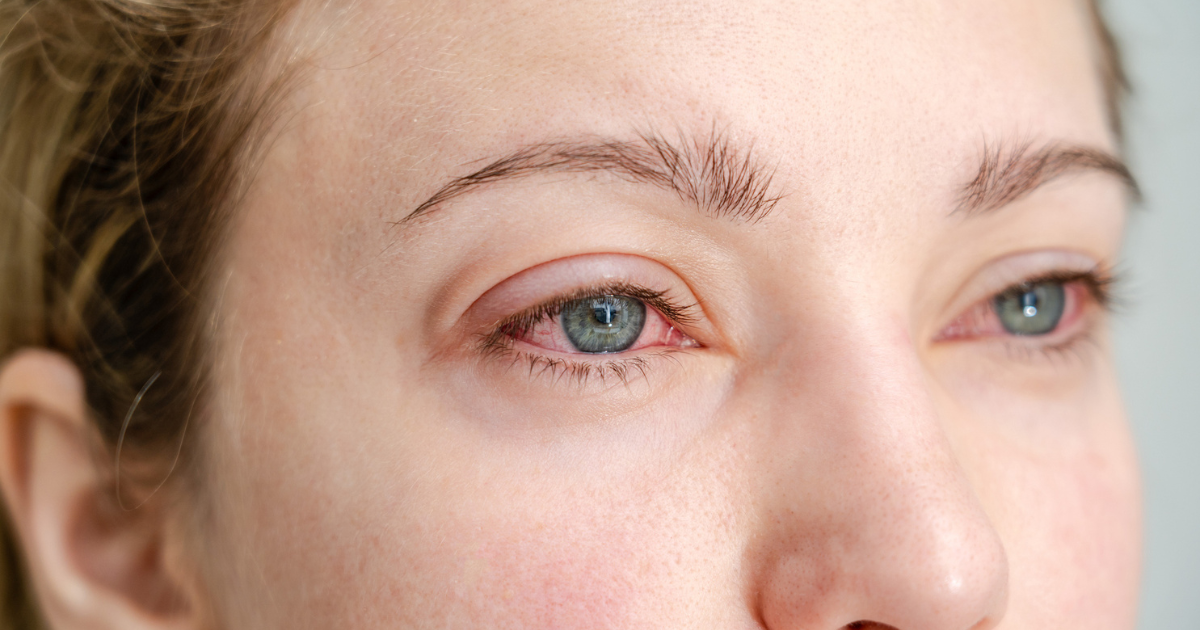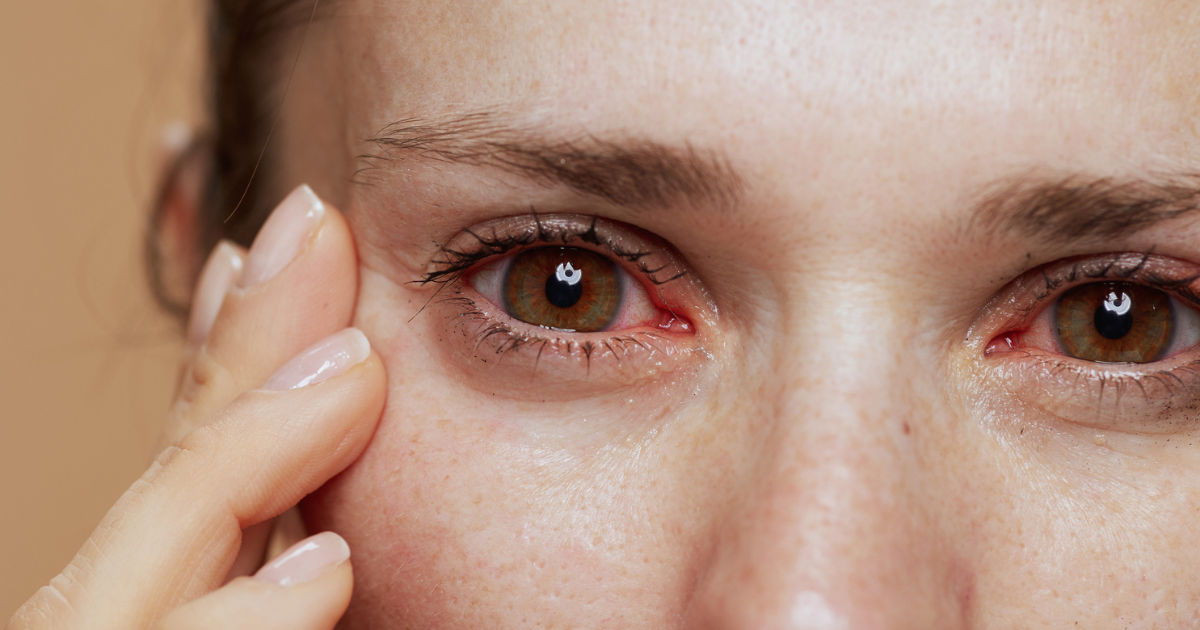Eye Allergy Treatments That Work for Itchy, Red, and Watery Eyes
September 4, 2025
Eye allergies (also called allergic conjunctivitis) happen when allergens like pollen, dust, or pet dander irritate the eyes. The good news is that there are safe, effective relief methods. From over-the-counter drops to prescription treatments, the right approach depends on your symptoms and triggers.
Over-the-Counter Relief
 One of the easiest ways to calm allergy eyes is with over-the-counter (OTC) eye drops. The one you need depends on what is bothering you most. Here is a quick guide:
One of the easiest ways to calm allergy eyes is with over-the-counter (OTC) eye drops. The one you need depends on what is bothering you most. Here is a quick guide:
- Antihistamine drops – These block the histamine reaction that causes itching and redness. They are a good choice if your main complaint is constant itching or eyes that look bloodshot.
- Lubricating or artificial tears – These do not fight the allergy but help wash out allergens and soothe dryness. They are helpful if your eyes feel gritty or tired from pollen or dust.
- Combination drops – Some brands mix antihistamine and lubricating ingredients. They offer both quick itch relief and extra moisture in one bottle.
- Eye wash for allergies – A simple saline rinse can give instant comfort by flushing pollen or pet dander away.
Quick tip: Skip drops labeled only as “redness relief.” They may shrink blood vessels temporarily, but over time, they can cause rebound redness and make your eyes look worse.
How to Use Allergy Eye Drops Correctly
A few simple steps make them more effective and lower your risk of infection.
- Wash your hands with soap and water before touching your face or the bottle.
- Tilt your head back and look up at the ceiling.
- Gently pull down your lower eyelid to make a small pocket.
- Hold the bottle above your eye without letting the tip touch your lashes, skin, or eye surface.
- Squeeze out one drop into the pocket, then close your eye for 30 seconds to let it absorb.
- Blot away any excess with a clean tissue.
Keeping the tip of the bottle clean is crucial. If it touches your eye or hands, bacteria can spread and cause infections.
You may also notice that some eye drops come in single-use vials while others are in multi-dose bottles. Single-use vials are preservative-free, which makes them gentler if you need drops several times a day. Multi-dose bottles are more convenient and cost-effective, but they contain preservatives and must be handled carefully to stay clean during allergy season.
Cold Compresses & Home Remedies
Sometimes the simplest remedies bring the most relief. A cold compress calms irritated eyes in just a few minutes. The cool temperature helps reduce swelling, eases itching, and gently constricts blood vessels so your eyes look and feel less inflamed.
You do not need anything fancy. A clean washcloth soaked in cold water works well. You can also chill artificial tears in the refrigerator for extra soothing comfort.
Other small changes can make a difference too:
- Use a clean washcloth compress each time. When symptoms flare, rest it over closed eyes for 5–10 minutes.
- Keep windows closed. During high pollen days, keep allergens outside and run your air conditioning instead.
- Rinse away allergens after being outdoors. A quick flush with preservative-free artificial tears or an eye wash can help.
These strategies are safe and supportive, but they are not cure-alls. They work best alongside allergy eye drops or other treatments your doctor may recommend.
When Allergy Eyes Need More Than OTC Relief

Over-the-counter drops and home remedies help most people, but sometimes allergy eyes need a closer look. If your symptoms are not improving, it is time to see an eye doctor.
Signs you should schedule a visit include:
- Severe redness, pain, or sudden vision changes.
- Swollen eyelids that will not go down, even after using OTC drops or compresses.
- Ongoing symptoms that linger for weeks without relief.
- Overlapping conditions, such as dry eye or chronic conjunctivitis, that complicate the picture.
In these cases, prescription treatment may be the next step. Your doctor might recommend:
- Stronger antihistamine or anti-inflammatory drops for stubborn itching and redness.
- Short-term steroid drops to calm severe flare-ups (used carefully under supervision).
- Allergy immunotherapy (allergy shots or tablets) to treat the root cause and reduce reactions over time.
Seeing an eye specialist ensures that your symptoms are treated correctly and safely. It also helps rule out more serious conditions that look like allergies but require different care.
Long-Term Allergy Eye Care & Lifestyle Tips
Managing eye allergies is not only about quick fixes. Limiting allergen exposure where you can helps in the long run.
- Use a HEPA filter in your home to trap pollen, dust, and pet dander.
- Wear sunglasses outdoors to shield your eyes from airborne irritants.
- Take a shower after spending time outside to rinse pollen from your skin, hair, and eyelashes.
Supporting your eyes with regular checkups is just as important. Routine visits allow your doctor to track changes, adjust treatments, and catch other conditions early.
Long-term care often works best with a personalized plan. Specialists help you find the right mix of daily habits, eye drops, and medical treatments. Over time, this tailored approach means fewer flare-ups and more consistent eye comfort.
Finding Lasting Relief for Allergy Eyes
Eye allergies can be frustrating, but are manageable with the proper care. However, if your eyes are not improving or you notice swelling, pain, or vision changes, it is time to see a specialist.
At Heart of Texas Eye Care, our team offers personalized treatment plans to help you find lasting comfort and keep your eyes healthy. Schedule a visit today or call us at (512) 213-2220 to move toward clearer, more comfortable vision.
We serve patients in Dripping Springs, Austin, Kyle, Bee Cave, Marble Falls, and other surrounding areas.


